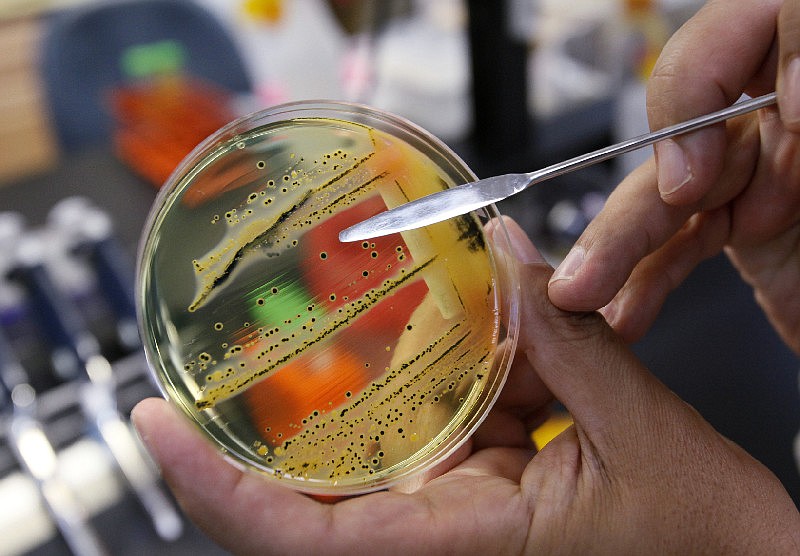Twenty-five recent cases of salmonella have been reported in Cole County as of Tuesday.
That's not a lot considering there are 78,000 people in the county, Cole County Health Department Director Kristi Campbell said, but it is an increase.
"It's a very common illness because you can get it from a lot of places - chicken, eggs, handling baby chicks, or even pets such as lizards and snakes," she said.
Campbell said officials can't identify whether the illness came from the same source until test results return from the Missouri Department of Health and Senior Services' State Public Health Laboratory to determine the strain of salmonella.
"On Friday, when we had 20 cases, 13 were found to have eaten at one particular restaurant; but if the pattern of salmonella isn't the same in all those cases, then we can't say they were related," she said. "If we find we have several cases all with the same patterns and not everybody ate at the same restaurant, then we're back to square one."
The health department first noticed the increase last Wednesday.
"The onset for these illnesses occurred from April 5-11, so by the time they go to the doctor, it's an even longer time to get things figured out," Campbell said.
It's also too late for officials to get samples of possible contaminated food at a restaurant because it would be gone by now. "Finding that exact item that made a person sick is nearly impossible," Campbell said.
When a foodborne disease outbreak is detected, public health officials interview affected individuals and gather information, while regulatory officials may inspect food establishments to find the likely source of the outbreak, according to a news release from the county health department.
Through interviews with individuals diagnosed with salmonella, health department officials noted several food establishments were named, while some of those affected had not eaten at any restaurants.
The county does not inspect restaurants in Jefferson City, which is the jurisdiction of city Environmental Health Services Division. The county health department has notified city staff to investigate safe food-handling procedures at the food establishments named by affected individuals, according to the news release.
"I tell people that they need to realize an inspection is just a snapshot in time," Campbell said. "An inspector only sees what's going on at that moment. You don't know what happened three days before."
Most people infected with salmonella develop symptoms of diarrhea, abdominal cramping and a low-grade fever with 12-72 hours of infection, according to the health department's news release. The illness typically lasts four to seven days and typically does not require treatment.
Those with persistent symptoms or dehydration should seek medical attention.

